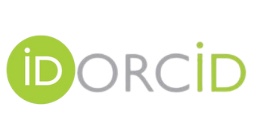Fine Motor Skills in Pediatric Patients with Cerebral Palsy
Keywords:
cerebral palsy, fine motor skills, Peabody Motor Development Scale, occupational therapyAbstract
Introduction:
Pediatric patients with cerebral palsy present clinical characteristics in the upper limbs that generate alterations in fine motor skills and make it difficult to perform manual activities.
Objective:
To assess the effectiveness of occupational therapy in the development of fine motor skills for pediatric patients with cerebral palsy.
Methods:
A descriptive, longitudinal and retrospective study was carried out at the International Center for Neurological Restoration, from January to December 2019. The universe was 88 patients with neurological diseases, a sample of 31 between the ages of four to seven years was taken. The medical histories and occupational therapy records were reviewed and verified with the result of the external diagnosis, application of the neurorehabilitation treatment, and the initial and final evaluation. The Peabody Motor Development Scale (fine motor skills) was applied. To analyze the results, the percentage calculation and the non-parametric Wilcoxon Matched Pairs Test were used.
Results:
The male sex predominated in 58.1%, spastic type cerebral palsy in 45.2% and the permanence of two cycles, 56 days of treatment, in 100%. The age range between four and five years stood out at 74.2%. The final evaluation showed an average improvement value for the motor age of 14.3 months and a motor development coefficient of 97.9, normal.
Conclusions:
Occupational therapy favors the development of fine motor skills in pediatric patients with cerebral palsy, in relation to simple and complex manual skills.
Downloads
References
Vitikas K, Dalton H, Breish D. Parálisis cerebral: una descripción general. American family physician. 2020 [citado 15 Oct 2022];101(4):213-20. Disponible en: https://pubmed.ncbi.nlm.nih.gov/3205326/
Sadawsk M, Serecka Hujar B, Kopyta I. Parálisis cerebral: opiniones actuales sobre definición, epidemiologia, factores de riesgo, clasificación y opciones de tratamiento. Neuropsychiatric Disease and treatment. 2020 [citado15 Dic 2022]; 16:1505-18. Disponible en: https://doi.org/10.2147/NDT.S235165
Meneses Castaño C, Penagos P, Yamile B. Efectividad de la tecnología robótica y realidad virtual para la rehabilitación de la función motora en la parálisis cerebral. Revisión sistemática. Escuela Colombiana de Rehabilitación. 2022 [citado 25 Dic 2022]. Disponible en: https://doi.otg/10.1016/j.rh.2022.07.001
Vázquez Álvarez M. Parálisis cerebral infantil: propuesta de evaluación e intervención neuropsicológica. Universidad Obrera de Cataluña. 2022 [citado: 13 Oct 2022]. Disponible en: http://hdl.handle.net/10609/139626
Rodríguez M, Cano R. Aplicaciones móviles en la parálisis cerebral infantil. Neurología. 2021 [citado 15 Oct 2022]; 36(2): 135-48. Disponible en: https://doi.org/10.1016/j.nrl.2017.09.018
Mecías AM, García I, Bernal RE, Zapata HE. La estimulación y el desarrollo motor fino en niños de 5 años. Conrado. 2020 [citado 06 Dic 2021]; 16 (74): 306-11 Disponible en: scielo.sld.cu/scielo.php?scrpt=sci_arttextpid=S1990-86442020000300306
Espinosa CI, Amaguaya G, Culqui M, Espinosa J, Silva J, Angulo A, Rivera J, Avilés AC. Prevalencia, factores de riesgo y características clínicas de la parálisis cerebral infantil. Archivos venezolanos de farmacología y terapéutica. 2019 [citado 16 Sep 2022]; 38 (6). Disponible en: https://www.redalyc.org/articulo.oa?id=55964142018
Torriente N, Zurita CR, Sánchez M, Marrero NT, Echemendía A. Desarrollo de la motricidad fina en infantes con parálisis cerebral mediante Terapia Ocupacional. Revista Cubana de Medicina Física y Rehabilitación. 2022 [citado 15 Ene 2023]; 14(3):1-17. Disponible en: https://revrehabilitacion.sld.cu/index.php/reh/article/view/
Plasschaert VFP, Vriezekolk JE, Aarts PBM, Geurts ACH, Van den Ende CHM. Intervenciones para mejorar la función de las extremidades superiores en niños con parálisis cerebral bilateral: una revisión sistemática. Dev Med Child Neurol. 2019 [citado 15 Dic 2022]; 61(8):899-907. Disponible en:https://doi.org/10.111/dcm.14141
Maileux L, De Beukelaer N, Carbone MB, Ortibus E. Intervenciones tempranas en lactantes con parálisis cerebral unilateral: revisión sistemática y síntesis narrativa. Research in Developmental Disabilities. 2021 [citado 15 Ene 2023]; 117:104058. Disponible en: https://doi.org/10.1016/j.ridd.2021.104058
Marie A, Castillo J, Carrrillo L. Resultados y evidencias de la atención y terapéutica del niño/a con parálisis cerebral. Revista Latinoamericana de Discapacidad, Sociedad y Derechos Humanos. 2021 [citado 19 Oct 2022];5 (1): 176-200. Disponible en: https://www.fundacionsanjuanecuador.org/
Martínez MC, Sánchez A. Efectividad de la terapia de movimiento inducido por restricción del lado sano en la rehabilitación del miembro superior en pacientes con parálisis cerebral: revisión sistemática. Rehabilitación. 2021 [citado18Oct2022]; 55 (3): 199-217. Disponible en: https://doi.org/10.1016/j.rh.2020.08.002
Masina N, Montero S. Efectividad de la técnica bimanual intensiva en la motricidad gruesa y fina de niños con Parálisis Cerebral. Revisión sistemática. Fisioterapia. 2021 [citado 28 Ene 2023]; 43 (3): 151-58. Disponible en: https://doi.org/10.1016/j.ft.2020.10.002
Sandoval V. Estudio de la motricidad fina en niños de edad preescolar. Mogrovejo. 2021 [citado 25 Feb 2023]. Disponible en: http://hdl.handle.net/20.500.12423/3263
Hermoso J, Villalta LA. Efectos de un programa basado en el análisis conductual aplicado en la mejora de las habilidades comunicativas y motrices en un caso de Parálisis Cerebral. Revista Digital EOS Perú. 2020 [citado15 Oct 2022]; 6 (1): 39-52. Disponible en: http://www.revistaeos.net.pe.index.php/revistadigitaleos/article/view/21
Zabalo E. Terapia de movimiento inducido por restricción y videojuegos en el tratamiento de la extremidad superior en niños con parálisis cerebral. Revisión bibliográfica y propuesta de intervención. UPNA. 2022 [citado: 1 Dic 2023]. Disponible en: https://hdl.handle.net/2454/44112
Published
How to Cite
Issue
Section
License
Medimay protects copyright from the very first moment the submission is made, but upon publication it assumes a Creative Commons 4.0 (cc-by-nc) license, which allows the use of the work to share (copy and redistribute the material in any medium or format) and adapt (remix, transform and build from the material) as long as exclusive mention is made of the publication in the journal as a primary source, prohibiting its commercialization. The author always retains his/her right.















 This site is licensed under a
This site is licensed under a